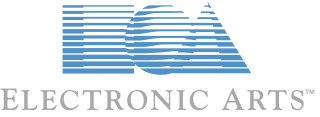Difference between revisions of "Electronic Arts Victor"
From Sega Retro
m |
|||
| (2 intermediate revisions by 2 users not shown) | |||
| Line 1: | Line 1: | ||
{{CompanyBob | {{CompanyBob | ||
| − | | logo= | + | | logo=EA logo older.svg |
| − | |||
| founded=1992-09 | | founded=1992-09 | ||
| defunct=1998 | | defunct=1998 | ||
| Line 11: | Line 10: | ||
'''Electronic Arts Victor''' (エレクトロニック・アーツ・ビクター; aka EAV, EA Victor) was a joint venture of [[Electronic Arts]] (EA) and [[Victor Entertainment]], a subsidiary of [[JVC]], started in September 1992 in Tokyo, Japan. [http://www.fundinguniverse.com/company-histories/Electronic-Arts-Inc-Company-History.html] It primarily published and localized Electronic Arts products for the Japanese market, with the intention of making the EA brand known and accepted in that country. Before then, the few EA games on [[Sega]] consoles published in Japan (such as ''[[Blockout]]'') were published by Sega (other consoles/computers are unknown at the moment). EAV also ported several EA computer games to Japanese home computers such as the PC-98. | '''Electronic Arts Victor''' (エレクトロニック・アーツ・ビクター; aka EAV, EA Victor) was a joint venture of [[Electronic Arts]] (EA) and [[Victor Entertainment]], a subsidiary of [[JVC]], started in September 1992 in Tokyo, Japan. [http://www.fundinguniverse.com/company-histories/Electronic-Arts-Inc-Company-History.html] It primarily published and localized Electronic Arts products for the Japanese market, with the intention of making the EA brand known and accepted in that country. Before then, the few EA games on [[Sega]] consoles published in Japan (such as ''[[Blockout]]'') were published by Sega (other consoles/computers are unknown at the moment). EAV also ported several EA computer games to Japanese home computers such as the PC-98. | ||
| + | |||
| + | [[File:RolototheRescue MD JP Cart.jpg|thumb|280px|The Electronic Arts' "Yellow Tab" design was also used in Japan.]] | ||
The joint venture appears to have dissolved (at least on the Sega side) in late 1996/early 1997; EA would publish one last Saturn game themselves in Japan, ''[[Battle Garegga]]'', in 1998 before refusing to remain supporters of Sega platforms when the [[Dreamcast]] arrived. (They would continue to publish Saturn games overseas until the end of the year.) Whatever happened to Victor's involvement in the video game industry afterward is presently unknown. | The joint venture appears to have dissolved (at least on the Sega side) in late 1996/early 1997; EA would publish one last Saturn game themselves in Japan, ''[[Battle Garegga]]'', in 1998 before refusing to remain supporters of Sega platforms when the [[Dreamcast]] arrived. (They would continue to publish Saturn games overseas until the end of the year.) Whatever happened to Victor's involvement in the video game industry afterward is presently unknown. | ||
Latest revision as of 13:52, 1 May 2023

| ||
| Electronic Arts Victor | ||
|---|---|---|
| Founded: 1992-09 | ||
| Defunct: 1998 | ||
| T-series code: T-106 | ||
| Merged into: Electronic Arts | ||
Headquarters:
|
Electronic Arts Victor (エレクトロニック・アーツ・ビクター; aka EAV, EA Victor) was a joint venture of Electronic Arts (EA) and Victor Entertainment, a subsidiary of JVC, started in September 1992 in Tokyo, Japan. [1] It primarily published and localized Electronic Arts products for the Japanese market, with the intention of making the EA brand known and accepted in that country. Before then, the few EA games on Sega consoles published in Japan (such as Blockout) were published by Sega (other consoles/computers are unknown at the moment). EAV also ported several EA computer games to Japanese home computers such as the PC-98.
The joint venture appears to have dissolved (at least on the Sega side) in late 1996/early 1997; EA would publish one last Saturn game themselves in Japan, Battle Garegga, in 1998 before refusing to remain supporters of Sega platforms when the Dreamcast arrived. (They would continue to publish Saturn games overseas until the end of the year.) Whatever happened to Victor's involvement in the video game industry afterward is presently unknown.
EAV also did some in-house development, though none of it was Sega-related or on a Sega system (except for porting Cotton to the X68000).
EA later started a similar joint venture in 1998-2003 with Square called Electronic Arts Square (EA Square). After Square merged with Enix, Electronic Arts started to publish games in Japan without having a joint.
Softography
Mega Drive
- F-22 Interceptor: Advanced Tactical Fighter (1991)
- James Pond II: Codename RoboCod (1991)
- John Madden Football '92 (1991)
- Will Harvey Presents The Immortal (1991)
- EA Hockey (1991)
- Road Rash (1991)
- Fatal Rewind (1991)
- Desert Strike: Return to the Gulf (1992)
- LHX Attack Chopper (1992)
- Team USA Basketball (1992)
- Jordan vs Bird (1992)
- Bulls vs Lakers and the NBA Playoffs (1992)
- Crüe Ball (1992)
- Risky Woods (1992)
- Road Rash II (1992)
- B.O.B. (1993)
- Bulls versus Blazers and the NBA Playoffs (1993)
- FIFA International Soccer (1993)
- Jungle Strike (1993)
- Madden NFL '94 (1993)
- Mutant League Football (1993)
- PGA Tour Golf II (1993)
- Power Monger (1993)
- Rolo to the Rescue (1993)
- Super Baseball 2020 (1993)
- General Chaos (1993)
- F-117 Night Storm (1993)
- NBA Showdown '94 (1994)
Game Gear
- FIFA International Soccer (1994)
Saturn
- Mahjong Gokuu Tenjiku (1994)
- Theme Park (1995)
- Senryaku Shougi (1995)
- FIFA Soccer 96 (1995)
- Hi-Octane (1995)
- Alone in the Dark 2 (1996)
- Loaded (1996)
- Magic Carpet (1996)
- NHL 97 (1996)
- Nissan Presents Over Drivin' GT-R Demo-CD Hibaihin (1996)
- Road Rash (1996)
- Shellshock (1996)
- PGA Tour 97 (1996)
- Nissan Presents Over Drivin' GT-R (1996)
- Soviet Strike (1997)
- Warcraft II: The Dark Saga (1997)
- Soukyugurentai (1997)
- Shin Theme Park (1997)
- Rabbit (1997)
- Raiden Fighters (unreleased)
- Raindrops (unreleased)
- Wing Commander III: Heart of the Tiger (unreleased)

